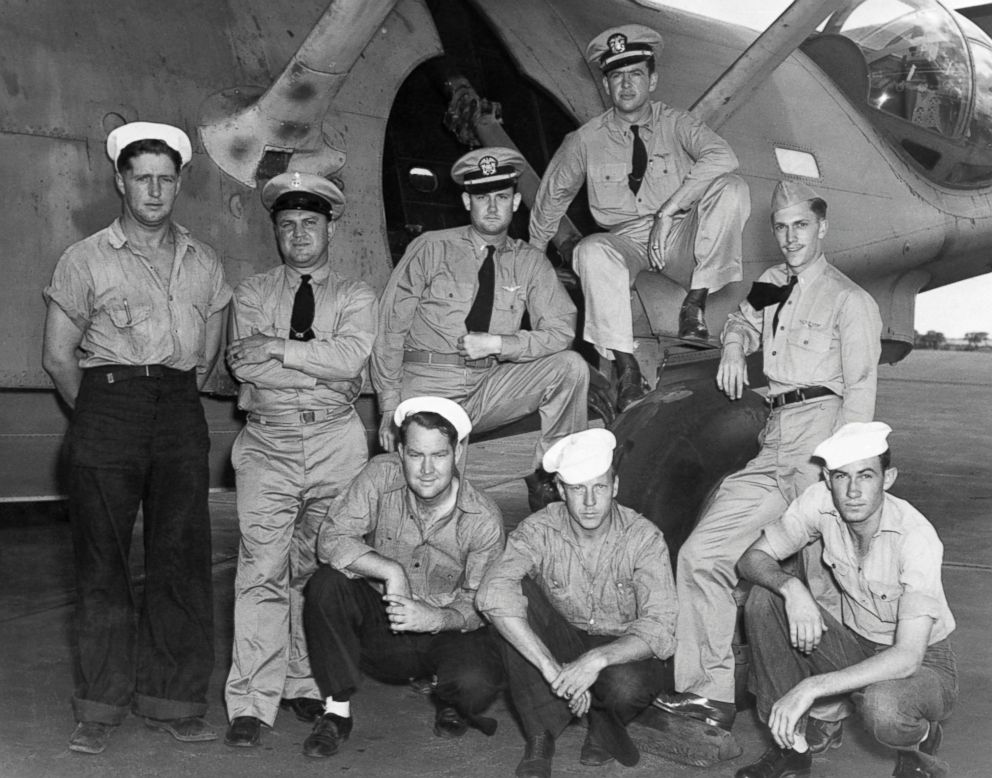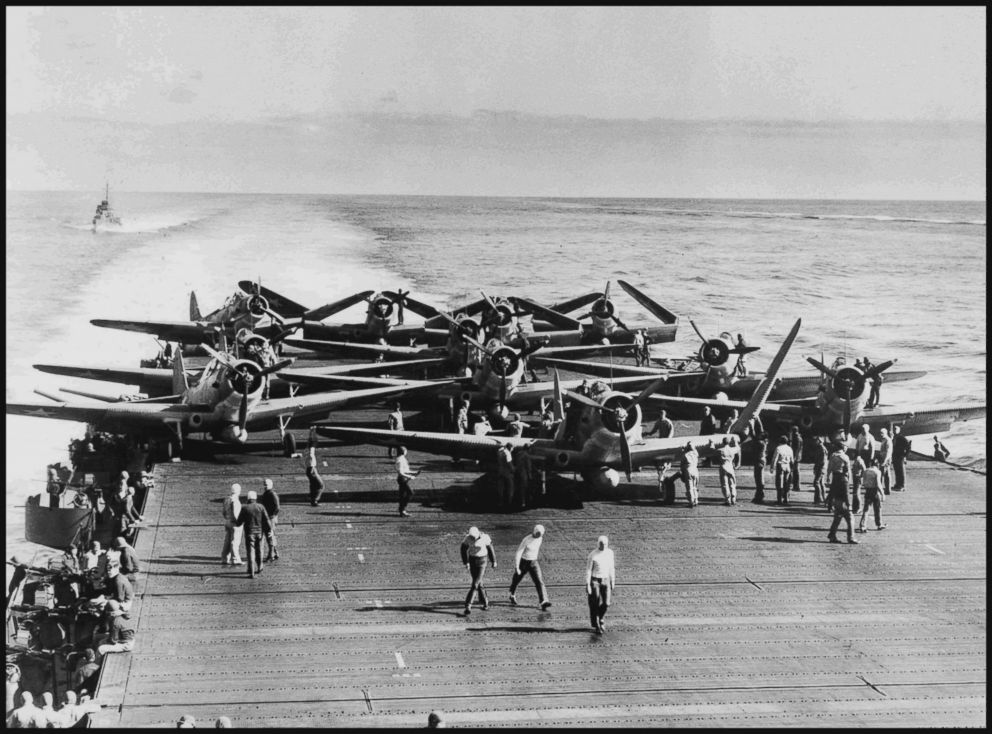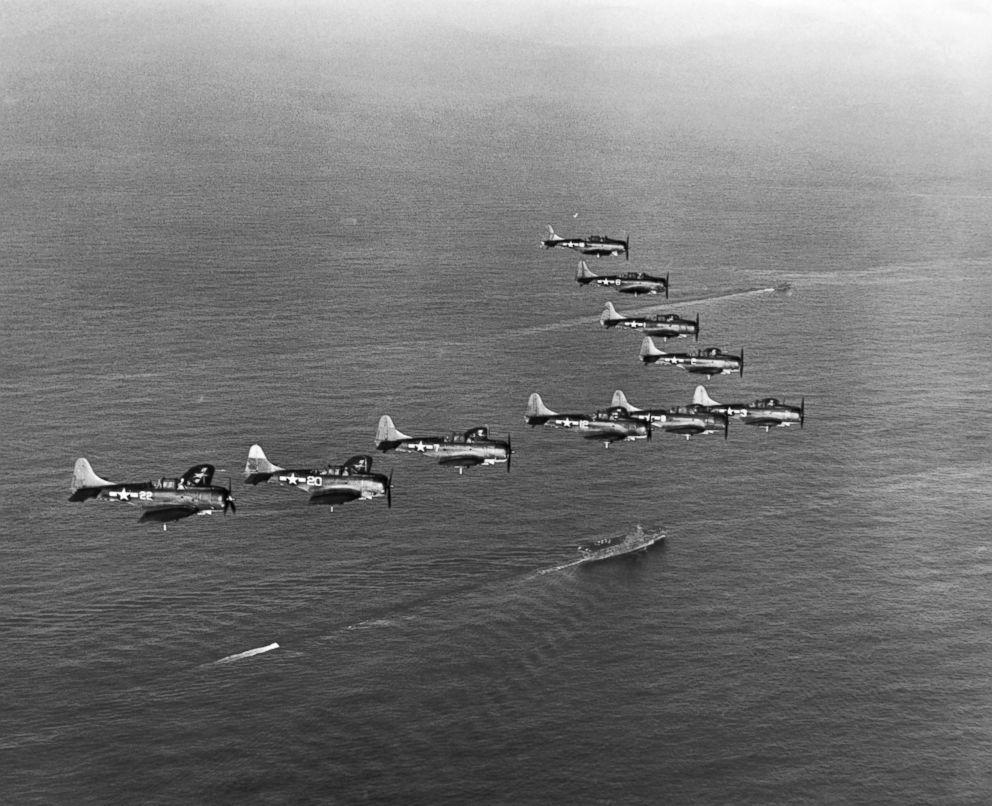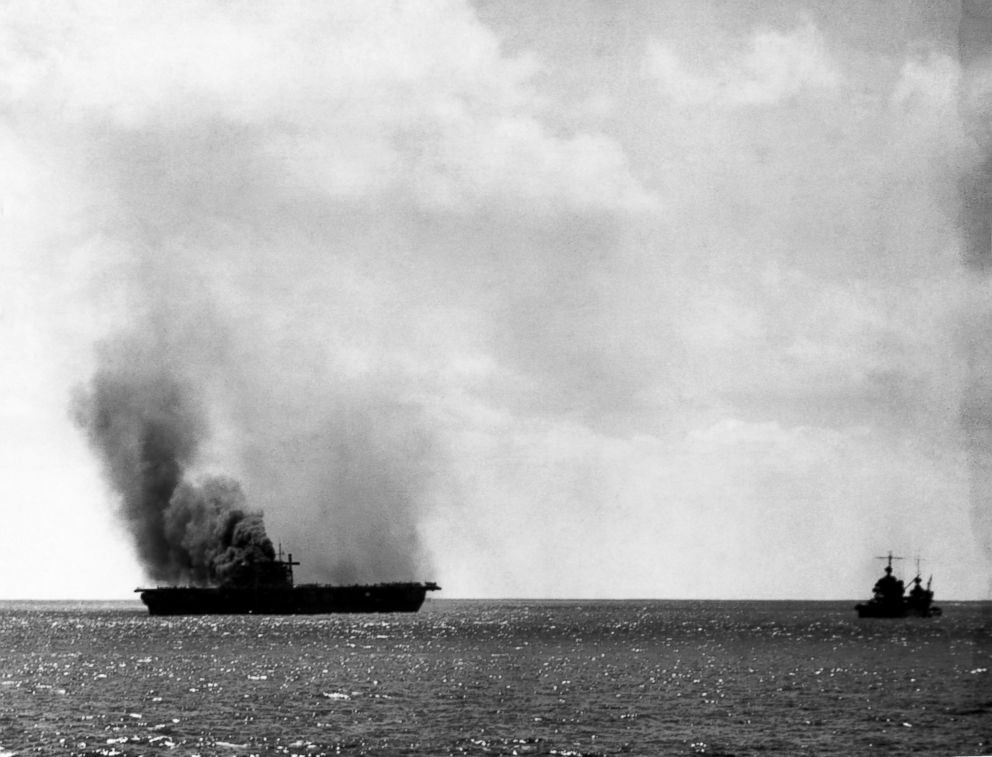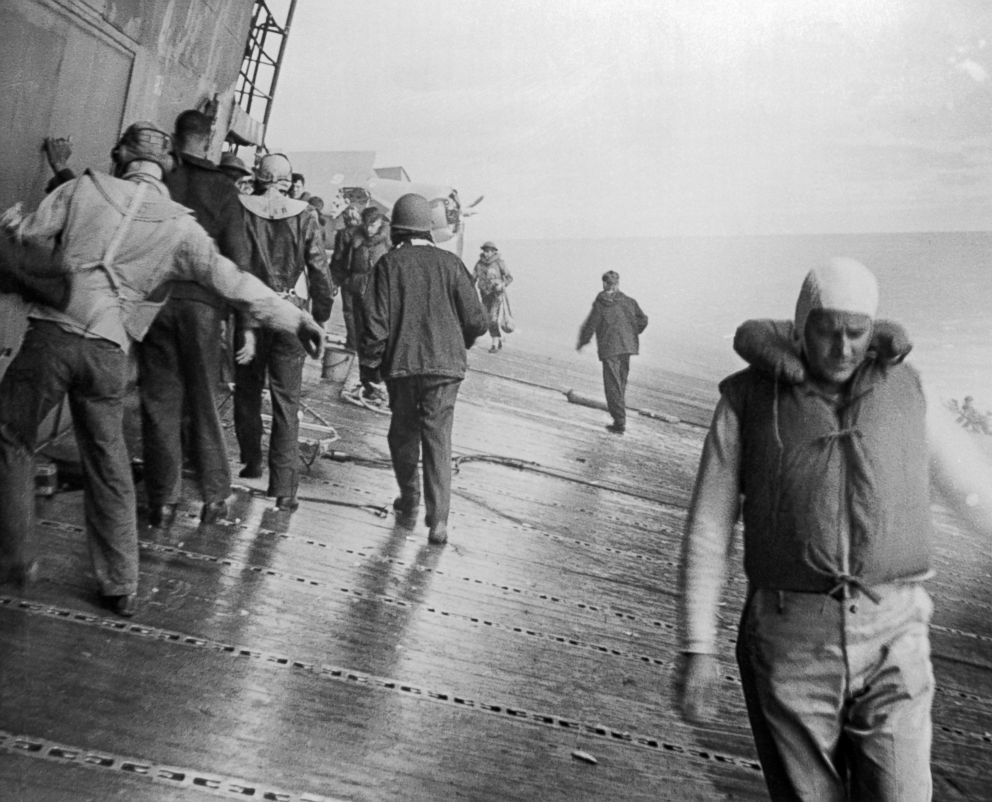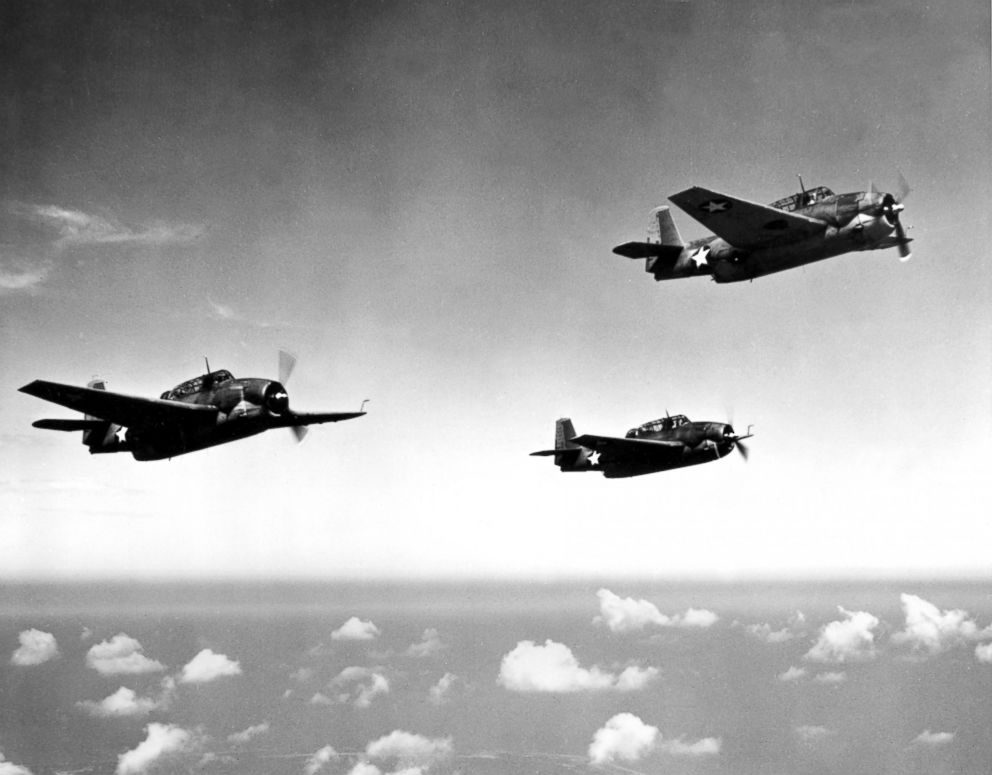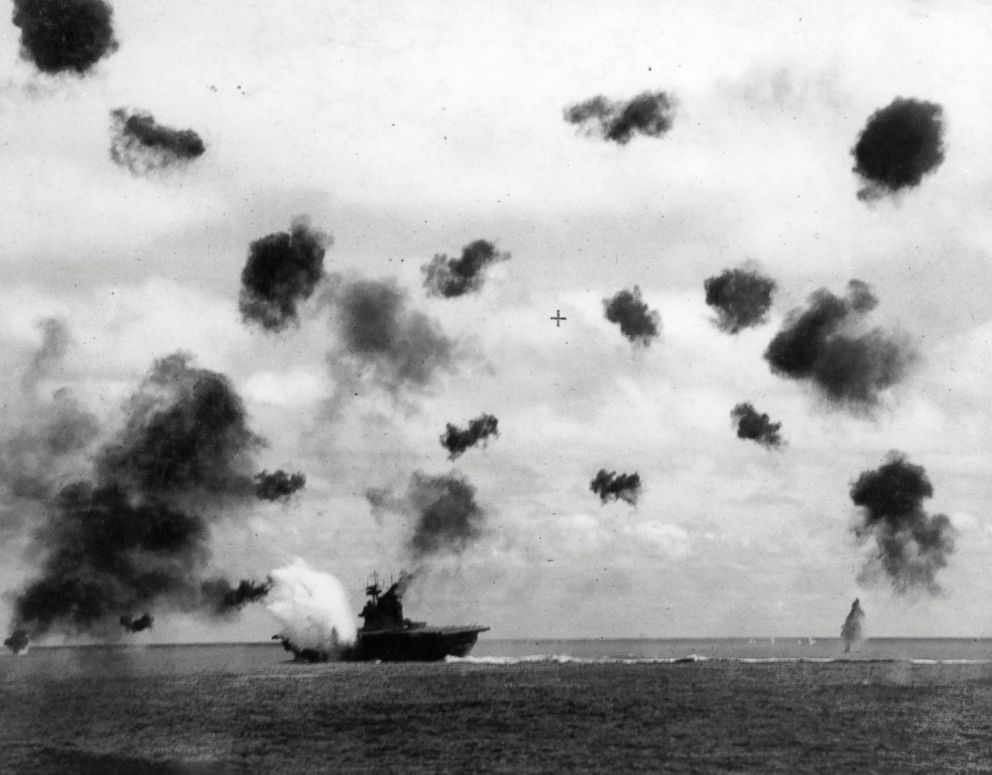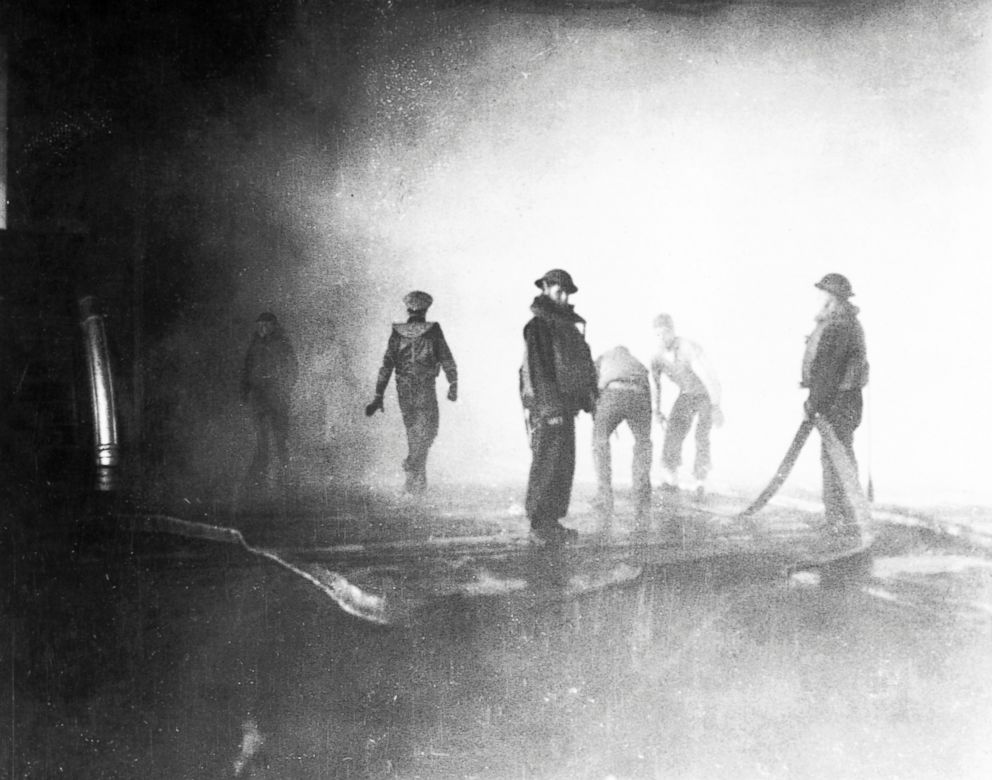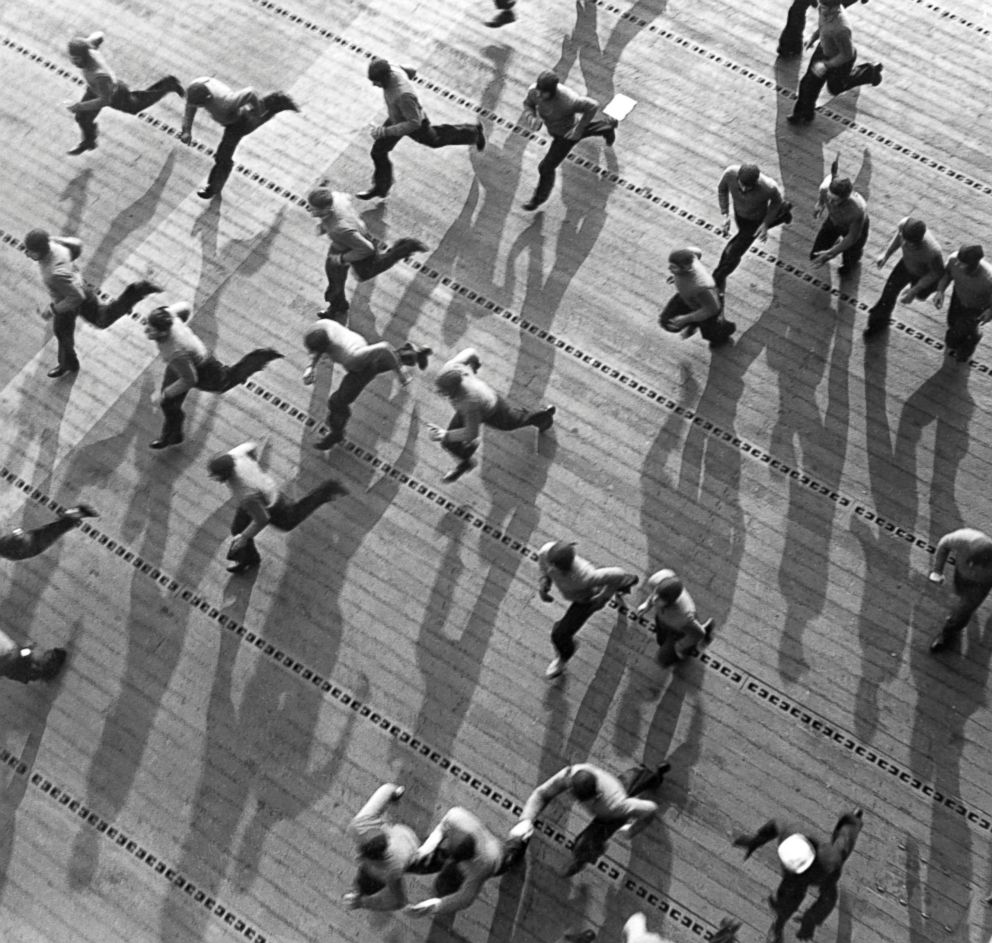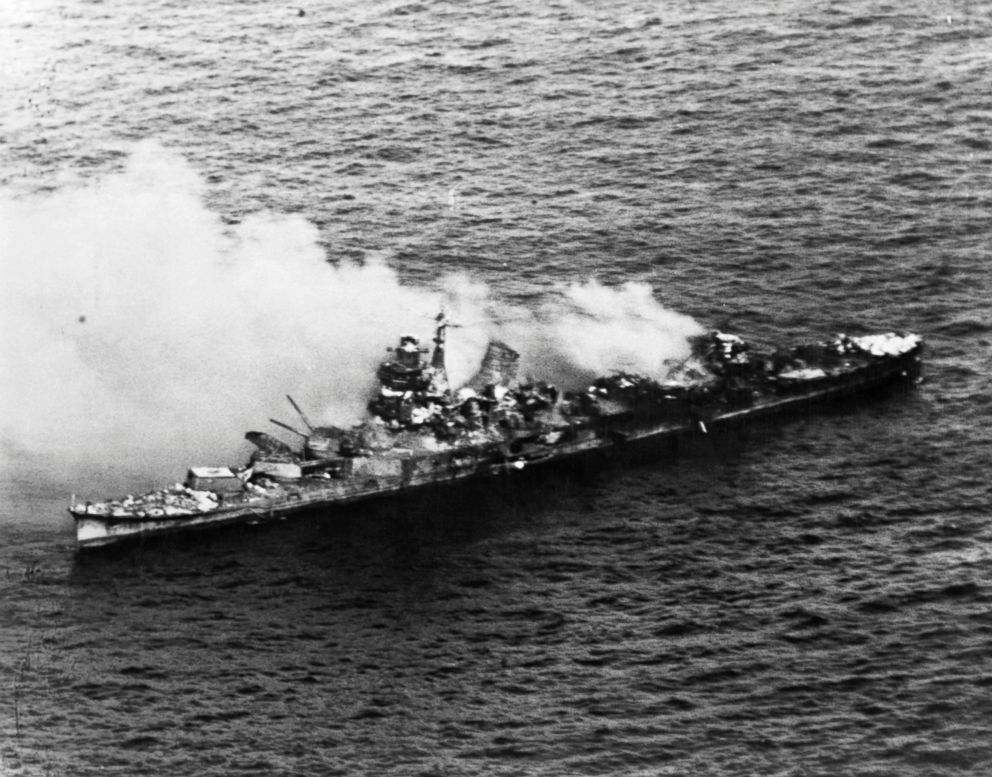75th anniversary of the Battle of Midway during WWII
June 4 marks the 75th anniversary of the Battle of Midway.
— -- On June 4, 1942, the heavily outnumbered US and Japan clashed in an epic nearly four-day battle off Midway Island, a tiny atoll about 1,000 miles northwest of Honolulu, Hawaii, in the Pacific Ocean.
The firefight left four Japanese aircraft carriers destroyed and turned the tide of the war in the Pacific for the allies.
This year marks the 75th anniversary of the World War II battle where the seemingly impenetrable Japanese Navy was finally crippled.
"The loss of the four aircraft was devastating, but the Japanese would suffer even more grievously for the loss of so many highly skilled naval aviators," G. Kurt Piehler, associate professor of History at Florida State University, told ABC News. "One of the flaws of the Japanese war effort was not rotating skilled aviators home to serve as instructors. Equally important, the Japanese fell behind the United States in terms of technological advancements in both the capability of all types of aircraft, torpedoes and bombs.
"Even before Pearl Harbor, the United States had begun to build a vast fleet that would dwarf the Japanese Navy by 1943," Piehler explained. "Despite a string of Japanese victories from Pearl Harbor until Midway, the Japanese had not destroyed the Pacific Fleet or forced the United States into a negotiated peace. After Midway, Japan would face a prolonged war and many of the early advantages would dissipate, most importantly the element of surprise."
Thus, the Battle of Midway was much more than a clash in the middle of the Pacific Ocean during WWII. The American victory against the Japanese turned the tide of WWII, according to Dr. Peter Mansoor, General Raymond E. Mason Jr. chair of Military History at Ohio State University.
"Before [the Battle of] Midway, the strategic momentum belonged to the Japanese," Mansoor told ABC News. "The battle ushered in a period of strategic equilibrium and evened the naval balance in the Pacific."
"The Americans and Australians were able to take advantage of this shift in momentum ... and by February 1943, [they] had shifted the strategic momentum in the Pacific to the allies for the remainder of the conflict," Mansoor added.
75th anniversary of the Battle of Midway
During the Battle of Midway, Japan lost more than four fleet carriers.
"In the Battle of Midway the Japanese lost ... all of their planes and most of their pilots," Mansoor told ABC News. "These resources were irreplaceable; the Japanese lacked the industrial capacity and training throughput to make good these losses in a timely manner."
The Americans suffered a loss of the destroyer, the USS Hammann, 145 aircraft and 300 casualties. Although those losses were significant, Mansoor said the U.S. was able to build new ships and planes thanks to its industrial infrastructure, as well as train new pilots to replace their casualties during the battle.
"After Midway the Japanese had no chance to win the Pacific War provided the United States retained the will to fight the conflict to the end," Mansoor said.
The Battle of Midway continues to influence modern military operations, according to historians.
"The most immediate lesson was the value of accurate intelligence," Piehler said. "As a result the U.S. Navy largely suppressed news of the battle for fear of giving Japan any hint their naval codes had been broken.
"In considering the lessons learned from this battle, the importance of good leadership proved decisive and the bravery of American combatants, especially aviators," Piehler continued. "The United States did not win this victory because of overwhelming resources, in fact, the advantage lay with Japan."
Good leadership, excellent intelligence and "a good bit of luck," according to Mansoor, showed the Americans they could best the Japanese in WWII.
